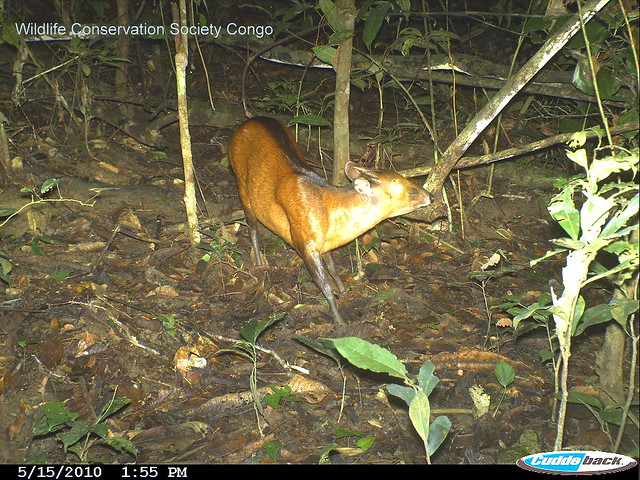Cephalophus dorsalis Cladus: Eukaryota Name Cephalophus dorsalis Gray, 1846 References * Cephalophus dorsalis on Mammal Species of the World. Vernacular names The Bay Duiker (Cephalophus dorsalis also known as the Black-Backed Duiker) is a forest dwelling Duiker found in Gabon, southern Cameroon and northern Congo as well as Sierra Leone, Liberia, and the southern parts of Côte d'Ivoire, Ghana and Benin. It is believed by some to be a subspecies of Ogilby's Duiker. Bay Duikers stand around 50 centimetres (19–20 inches) tall at the shoulder and weigh approximately 20 kilograms (45 pounds). Bay Duikers have a dark brown coat. There is a black stripe running along the back, from the nose to the tip of the tail and a white underside. There are spots above the eyes. Abbott's Duiker have small conical horns of 5 to 10 centimetres (2–4 inches). Bay Duikers live in dense rainforest, where they eat mainly plants, but also insects, eggs and small birds. Bay Duiker are nocturnal, spending the days at rest in thickets, buttress roots or even inside hollow trees. They form regular pathways through the dense undergrowth. Bay Duikers live alone or in pairs usually far from other Bay Duikers. 1. ^ IUCN SSC Antelope Specialist Group (2008). Cephalophus dorsalis. In: IUCN 2008. IUCN Red List of Threatened Species. Downloaded on 11 May 2008. Database entry includes a brief justification of why this species is of least concern Source: Wikipedia, Wikispecies: All text is available under the terms of the GNU Free Documentation License |
|


